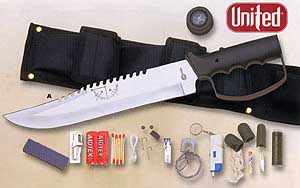Featured Member Video
How to stabilize scales, the easy way.More Videos by Camp10
View larger or ask the author a question.
View all wilderness survival videos
Recent Forum Posts 
| Thread Title | Replies |
| commercial manager salary uk | 2 |
| проститутки кантем... | 0 |
| SAD that this forum........DIED. | 8 |
| best | 0 |
| .......... | 2 |
| weather | 0 |
| AR Pistol Notice | 18 |
| What "ONE" Thing do you h... | 0 |
| "WAREAGLE" Wherefore art-... | 0 |
| Solar Eclipse April the 8th | 3 |
Come Join the Discussion Today!
Our site has been mentioned in:
U.S. News and World Report
Best of the Web - Site of the Week 8/6/01
Discovery Channel Canada
One Week in the Wilderness
USA Today
Hot Sites 08/08/2005
Plant Pests & Problems
Having grow beds indoors helps to protect your plants from the big majority of insects and other pests that can attack conventional gardens. But don't assume you can ignore this problem completely. There are potential problems indoors too, especially if you are using an "outdoor" space like a greenhouse.
Since there are fish to consider, you have to be very careful about what you spray on your plants. Natural products are always best and keep the doses to a minimum. Some suggestions on how to deal with bug problems:
Prevention - Keeping your growing area as bug-free as possible to begin with is a somewhat obvious place to start. Screens should be over all your windows and vents, and make sure to pick off or swat any bugs as soon as you see them. A little diligence in this can go a long way. Sticky bug traps are another handy method to keep the flying bug population down.
More Bugs - Having a small population of beneficial insects is a very natural and safe way to help with any infestations in your grow room. Lady bugs are a good example. They are completely harmless for your plants, but will eat all sorts of aphids, mites and scale bugs. Most garden centers will sell containers of live lady bugs in the spring that you can just release into your growing room.
Natural Sprays - If you do need to spray for insects, stay way from the harsh chemical ones. Homemade sprays that use garlic or pepper are a nice option but you still need to keep them in moderation. A little Neem oil is another option. When you use these types of sprays, cover up your fish tanks so that there is no additional fall-out into the water. Even doing a flush or two of water that doesn't flow out into the fish tank is a good idea after a pesticide application, to keep your fish water as clean as possible.
Bugs are only part of your list of potential problems. The humid conditions of most aquaponics rooms is a fabulous environment for a wide range of mildews, molds and fungi. You have to watch your plants closely for this. Powdery and downy mildew are the most common and show up as dusty or slightly fuzzy patches on your plant leaves. Trim off the infected leaves ASAP to prevent it from spreading any faster, and add some extra ventilation to get the humidity down. Spray leaves with Neem oil again or a natural form of fungicide. Treat the effected leaves sparingly, and try to cover up the growing medium so that no spray or drips get into the water system.
Other plant problems are likely going to involve your nutrient levels and water pH. The section on water will help you manage your levels and how to watch for symptoms in your plants.
Ultimate Survival Knife & Kit |
List Price: 61.99 Our Price: 39.95 |
This 15 inch survival knife with drop point blade features a thick quality stainless steel blade with serrated top edge. Textured and ribbed solid metal handle and guard. Nylon sheath. Survival kit includes a hollow grip with a compass top to store items within the knife itself, as well as additional pouches on the sheath to hold the rest. Complete survival kit. Click Here to Buy the Survival Knife Now. |
|

